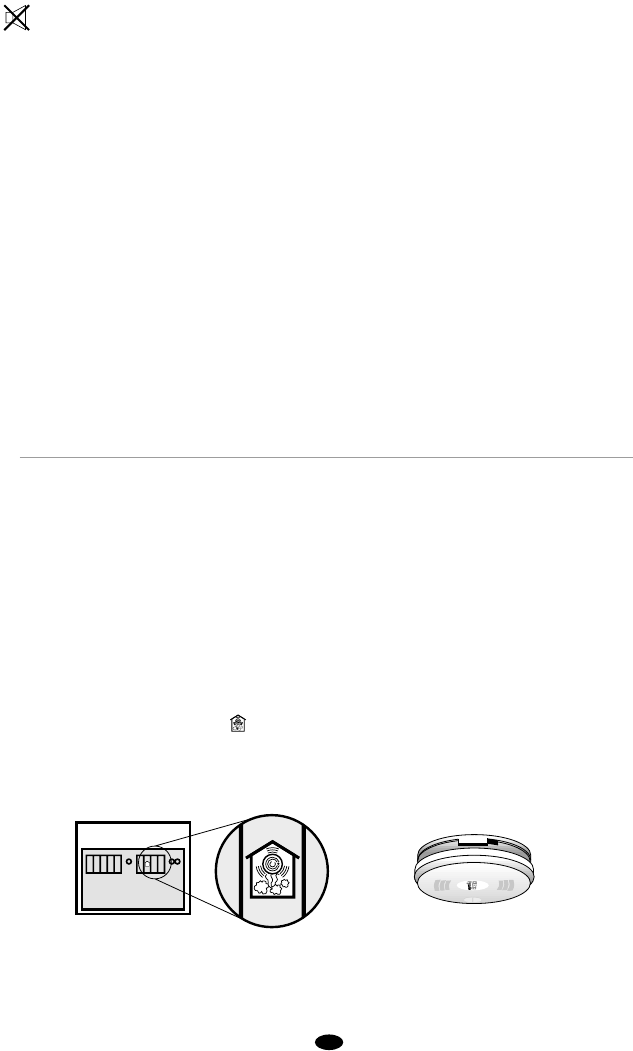
b. Testing
• Utilise the test button to test the alarm. Do not use naked flames as this does not
replicate smoke and may cause physical damage to the alarm.
Test all your alarms weekly – remember they are life saving devices, protecting
the family and home.
Press and hold the test button until the alarm sounds. All interconnected alarms
will also sound. (Do not stand too close to the alarm during testing – hearing may
be damaged.)
c. Hush Button
•
This feature temporarily desensitises the alarm circuit for approximately 7 minutes.
This feature is to be used only when a known alarm condition, such as fumes
from cooking, activates the alarm. The alarm is desensitised by pushing the
“HUSH” button on the alarm cover. If the smoke is not too dense, the alarm will
silence immediately and “chirp” every 30-40 seconds for approximately 7 minutes.
This indicates that the alarm is in a temporarily desensitised condition. The alarm
will automatically reset after approximately 7 minutes and sound the alarm if particles
of combustion are still present. The “HUSH” feature can be used repeatedly until
the air has been cleared of the condition causing the alarm.
Note:
Dense smoke will override the hush control feature and sound a continuous alarm.
Caution: Before using the alarm hush feature, identify the source of the smoke
and
be certain a safe condition exists. (On heat alarms with hush, the alarms sensor
has
detected a high temperature – e.g. 57°C. Check for possible causes
carefully.)
d. Nuisance Alarms
Warning: Persistent nuisance alarms indicates incorrect type and/or siting of
alarm. Review with your installer or Landlord after cleaning as described in
Section 7 (Maintenance).
5. Battery Checking/Changing*
Loose Battery Models
a. Low Battery Indicator (AC models with loose battery only)
If you hear the alarm chirp continuously every 30-40 seconds at the same time as
the led flashes (and have not just pressed the hush button) it indicates the battery
voltage is at an unacceptably low level. Replace the battery at the next possible
opportunity.
b. Battery Change
i. Firstly isolate the mains supply at the consumer unit by identifying the appro-
priate circuit. This may be a dedicated fuse marked “Fire/Smoke Alarms” or
with a symbol such as .
(If you rent your property, your Landlord may arrange this service for you.)
The green L.E.D. should now be out. If not, recheck before proceeding.
* See page 5, section “v”
Consumer Unit
U
N
C
L
I
P
A
N
D
S
L
I
D
E
4












